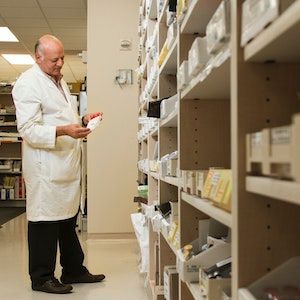Decline in Naloxone Prescription Rates Associated with COVID-19 Pandemic
Data show a nearly 30% reduction in individuals filling naloxone prescriptions at the start of COVID-19 pandemic, with no significant recovery observed.

The difficulties of the COVID-19 pandemic led to an increase in substance use, with overall emergency room visit decreasing but nonfatal opioid overdose visits more than doubling during the pandemic.
However, while studies show increased access to naloxone can reduce fatal overdoses, access to naloxone prescriptions were found in few patients on discharge.
A team of investigators led by Ashley L. O’Donoghue, PhD, of the Center for Healthcare Delivery Science, Beth Israel Deaconess Medical Center, found that an increase in access to naloxone could reduce some of the increases in fatal opioid overdoses during the COVID-19 pandemic.
Study
The team worked to analyze trends in filled naloxone prescription during the COVID-19 pandemic in the United States and compared them to trends in opioid prescriptions.
As part of the COVID-19 Research database, the team used Symphony Health database that includes 92% of national retail pharmacy claims, 71% of mail-order pharmacy claims, and 65% of specialty pharmacy activity.
Investigators examined rates from May 2019 – December 2020, analyzing weekly trends in the number of patients filling naloxone prescriptions, opioid prescriptions, and all prescriptions.
The team defined the COVID-19 pre-pandemic period from May 2019 – March 13, 2020, when a national emergency was declared in the United States. The pandemic period was stated as beginning the next week in May 2020 until December 2020.
Further, they used an interrupted time series design to measure changes in level and growth rate in weekly filled prescriptions, both before and during COVID-19.
They stratified analyses by payer, including Medicaid, Medicare, commercial, and cash, while also excluding weeks with national holidays.
Linear regression models were used with P ≤.05 considered statistically significant and 2-tailed tests.
Results
Investigators found an abrupt decline in the average numbers of individuals filling naloxone prescriptions per week in March 2020.
The number declined by 361.09 individuals (95% CI, -499.56 to -222.62), which is a 26.32% reduction.
According to the team, this exceeded the decline in number of individuals filling prescriptions for any medication (−14.76%) and for opioid medications (−8.71%).
They noted that there has been no statistically significant recovery in naloxone prescription rates since the decline in March 2020, with a 0.36% change in weekly growth rate (95% CI, -0.17 to 0.88).
There was a statistically significant decline in filling naloxone prescriptions at the start of the pandemic for individuals with Medicare (-34.15%) and commercial insurance (31.20%), while no change was found in patients with Medicaid or cash payment.
While the team found a decline of 8.71% in opioid prescription, the number is less than all prescriptions and much less than naloxone prescription.
Conclusion
Investigators concluded the pandemic identified a gap in medication access, particularly for individuals on Medicare and commercial insurance throughout the COVID-19 pandemic.
“Continuing to increase naloxone distribution in densely populated areas and via mail order and delivery through community-based organizations could help to mitigate some of the reductions in naloxone distribution via pharmacies and could reduce some of the increases in fatal opioid overdoses during the COVID-19 pandemic,” investigators wrote.
The study, “Trends in Filled Naloxone Prescriptions Before and During the COVID-19 Pandemic in the United States,” was published online by JAMA Health Forum.